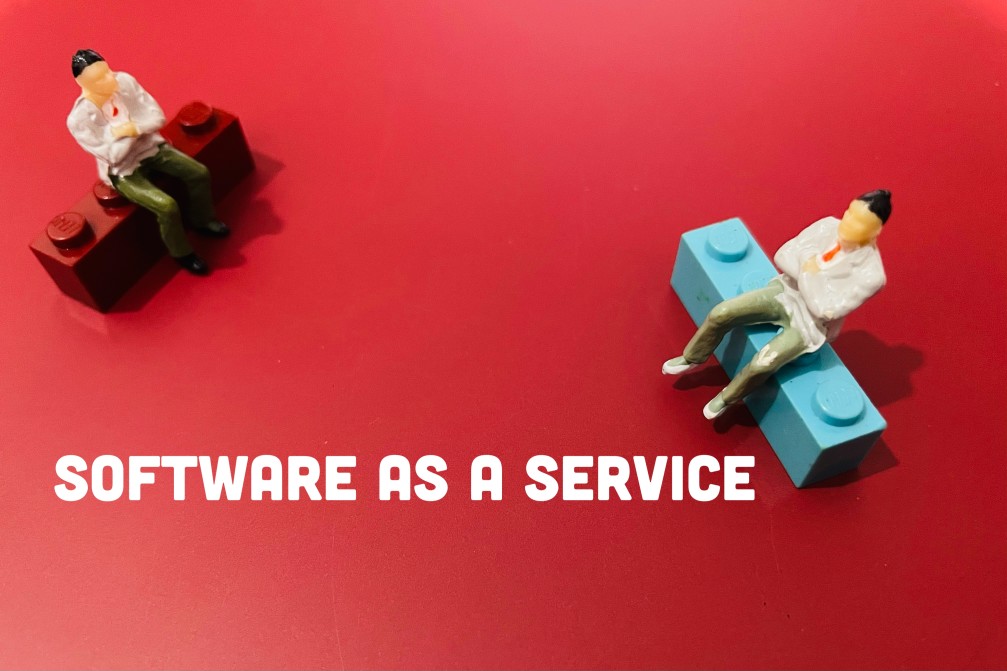What is a SaaS marketing strategy?
Saas marketing strategy is an umbrella term used to describe a software company’s marketing efforts. Marketing aims to attract and retain customers by creating a favourable impression of the company. Strategy is the plan guiding a business’ marketing plan and efforts. With a marketing strategy, decisions are data-driven and informed.
The concept of a SaaS marketing strategy is not new. It has been around for decades. However, we have seen a significant increase in companies offering SaaS solutions. The fierce competition in the space places a greater demand on your marketing team to develop innovative ways that get a potential customer over the line.
This post will look at some established marketing tactics based on real-life examples that have delivered prospective customers.

Mapping the customer journey
To understand your sales cycle, you must map your customers’ journey. This involves taking advantage of all available information about your prospects. Start with their demographics (age, gender, location) and then move into their interests (what do they read, watch or listen to?). Then consider their needs (do they need a solution today?) and their pain points (are there any problems preventing them from buying?). Once you know where your prospects are in this process, you can start to focus your marketing messages.
Your customer’s journey map should cover the entire process, from their first interaction with the application until they make a purchase. You should also include what happens after they buy, such as how often they use the product and whether they recommend it to others.
Customer segmentation
Once you’ve mapped out your customer’s journey, you’ll want to identify different groups of people who share similar characteristics. These segments can be defined by age, gender, income level, geographic region, job title, industry, etc. For example, if you sell a CRM system, you might create three segments: small businesses, medium-sized businesses and large enterprises. Each group would contain customers who share common traits and behaviours.
Segmentation helps you target your marketing message more effectively. For instance, if you’re selling a CRM system, you could send emails to small business owners while targeting larger corporations with a separate email campaign.
You can also segment your audience based on behaviour. For example, suppose your business sells a web analytics tool. In that case, you may find that your most active users fall under two categories: those interested in learning more about their website traffic and those looking for help improving their SEO performance.

You can also segment based on when they bought your product. For example, you may notice that a particular group of buyers sign up for your service immediately after purchasing another product. They may be using your service as part of a cross-sell or up-sell. Or perhaps they are just testing out your product before making a purchase. By understanding these patterns, you can tailor your messaging accordingly.
The best way to determine which segments to target is through analysis. Look for similarities between segments, including demographic factors, behavioural traits, interests, pain points, attitudes towards competitors and other variables. Use data collected from your website, social media platforms, surveys and other sources to build profiles of your customers.
The goal here is not to categorise every person in your database but rather to get a sense of the types of people who visit your site and interact with your content. With this information, you can develop a profile of each type of visitor and begin to think about how you can reach them.
Marketing automation
Next, you’ll want to automate some of your interactions with your audience. Marketing automation software allows you to schedule automated emails, newsletters, text messages, phone calls, tweets and even SMS texts. It does this by integrating with your existing CRM, email marketing platform, autoresponder and/or SMS provider.
For example, let’s say you sell a CRM solution. You can set up an automatic email blast to all your subscribers once a week. This will allow you to keep your sales team focused on helping clients solve problems instead of managing follow-up campaigns manually.
Automation is great for time management and efficiency. It frees up your marketing staff to focus on higher-value activities like prospecting, qualifying leads and closing deals.
Pricing
Pricing plays a massive role when competition is fierce. We will look at two examples of pricing models that have been used with some success.
Freemium Model
The freemium model is a great way to get the first ‘yes’ from your potential customers. The idea behind it is simple: give away something free (the basic version) and charge for premium features.
You know, if you’ve ever tried to use Facebook Ads without paying anything. Many businesses still use this model today.
It’s easy to implement and scale quickly because there’s no upfront cost. However, it has one major drawback – the conversion rate is low.
This means that you need to spend a lot of money to make enough profit to cover your costs. This might not be feasible if you’re looking to start a business.
Subscription Model
A subscription model is more traditional and requires a significant investment upfront.
This gives you access to a larger pool of potential customers. But it comes with its challenges.
First, it takes longer to gain traction since most people don’t want to pay monthly fees. Second, it can be difficult to convert those who subscribe into paying customers. Third, if you’re trying to grow fast, you may spend too much money chasing new customers.

The Ahrefs Model
Ahrefs is a software company that a marketing agency can use to gather data for informed marketing decisions. Until recently, they offered a weekly trial of their Saas product. Users would put in their card details and commit to being moved to a monthly plan once the trial was over. Instead of using a Freemium model, they required the least amount of commitment.
Their business model relied on customer satisfaction to deliver customer retention with their product. Unfortunately, more people started to take advantage of this week-long trial period over the years. Instead of paying $99 for the month, some users would pay $4 by taking a new trial every week.
The ideal customer for this business is willing and committed to moving up the sales funnel. They have since scrapped this $1 model. It may be worthwhile for new products to knock down one of the barriers to entry as you build your reputation among users.
Awareness
Awareness is a fundamental component of any marketing campaign. This marketing strategy focuses on increasing your product’s visibility online. It helps you understand how your message resonates with your audience. Awareness is measured in reach, frequency and response. You’ll also learn about the different types of awareness campaigns available.
Audience Research
You’ll discover the importance of understanding your target market before launching your product or service. Once you know where your target market is located, you’ll find out which channels are best suited to reaching them.
You’ll learn to conduct research through social media analytics, search engine optimisation, content analysis, etc.
Social Proof
Social proofing is one of the best ways to raise product awareness. People tend to trust recommendations from friends and family. So when someone recommends your product, it makes sense to give them credit.
Studies show that people are more likely to buy something after hearing positive reviews.
When you create content around your product, include testimonials from satisfied customers.
Blog Posts
Creating relevant content that deals with the challenges your potential customer is dealing with is a guaranteed way to deliver qualified leads. Blog posts will help you achieve this objective.
If you know what type of blog post would resonate with your target market, you’ll be able to write better content and increase your conversion rate. The key is to provide solutions to their problems and show them how your product can be used to facilitate them.
White papers
White papers are another great way to get your brand noticed. When done right, white papers can generate high-quality leads.
They’re easy to produce and distribute. In addition, they’re often free or very cheap to publish.
They’re written in plain English, so anyone can read them without needing technical expertise.
Once you’ve created a compelling white paper, you need to promote it. There are many options available to do this. For example, you can use paid advertising such as Google Adwords. Or you could opt for organic SEO.

Video content
Video content is the most widely consumed type of content today. This growth trajectory will not stop. Your audiences have a shorter concentration span than before. Creating video content is a great way to engage customers and prospects.
Videos are more accessible to share across all platforms. Plus, they’re engaging enough to keep viewers watching.
The key is to create videos that answer questions your prospects might have. Make sure to include calls to action at the end of each video.
Referral Marketing
Referral marketing is another excellent way to deliver word-of-mouth marketing. If you want to build a loyal following, you should consider creating referral programs.
You can offer your customers and prospects incentives to encourage them to refer others. People love referrals because they feel like they’re getting a gift. They don’t expect anything in return.
For example, if you sell software, you could offer discounts on future purchases. Or you could reward them for referring new customers.
Affiliates
Affiliate marketing is an effective way to drive traffic to your website. It’s also a great way to convert visitors into paying customers. Many SaaS companies collaborate with affiliates to generate sales from their existing audience.
There are two types of affiliate networks: commission-based and performance-based. Commission based networks pay commissions when someone signs up through their link. Performance-based networks pay commissions only when people purchase something.
When choosing which network to join, look for one that offers quality products and services. Also, make sure that you’re comfortable working with the company. You may even want to partner with several different networks to diversify your revenue streams.
Influencers
Influencer marketing is a great way to grow your business. Influencers are individuals who have large social media followings. They tend to be more influential than average users.
If you’re looking to reach influencers, there are multiple ways to do this. The first option is using social media. Find out what topics are trending, and then start sharing those posts.
You’ll get noticed faster if you post regularly. And once you gain some traction, you can approach influencers directly.

Ambassadors
Get some product ambassadors for your Saas product. These individuals already know how to use your product and can help spread the word about it.
They can be employees or contractors. But whatever role they play, they must understand the value of your product. They should be able to explain why your product is better than competitors.
They should also be willing to promote your product for free. There are many benefits to having an ambassador program. For starters, it helps you stand out from other businesses.
It also gives you access to potential leads. When people see that you’ve got an ambassador program, they assume you’re trustworthy.
It’s essential to choose your ambassadors carefully. Look for candidates who are passionate about your product. They should have a good understanding of your industry.
Digital Marketing
Content marketing
A sound content marketing strategy includes blog posts, videos and other forms of content. This will allow you to create valuable assets that attract search engines and human readers alike.
Content marketing aims to provide helpful information to keep your target market interested. If you do an excellent job at this, you’ll eventually develop a loyal following.
SaaS SEO
Search engine optimisation (SEO) is crucial for any digital marketing campaign. Without proper SEO, you won’t rank well on Google and other search engines.
This means that fewer people will find your site. And without new customers, you won’t earn money.
There are three main components of SEO:
Onsite optimisation – This involves creating high-quality content that attracts visitors. It also includes making sure your website loads quickly.
Offsite optimisation – This refers to getting links from other websites.
Keyword research – This is done by analysing keywords relevant to your business.
When it comes to keyword research, it’s essential to focus on long-tail keywords. These are less competitive terms that are easier to rank for.

PPC
Finally, let’s blow your marketing budget. Before you start using PPC, you must understand your acquisition cost. How much are you willing to spend to bring in one customer? You must consider the average lifetime value of each customer. For instance, a $100 cost of acquisition is worthwhile if the customer’s lifetime spend is $1000.
Email Marketing
If you want to grow your email list, you need to offer something special. That could mean anything from exclusive discounts to giveaways.
But don’t just send emails randomly. Add value to their lives with each email. Make them personalised. Add images, videos and even audio files.
You can also include offers like free samples. People love these because they get something right away. They also feel appreciated.
Don’t forget your current customers
Your sales process or customer journey is not complete when they make a purchase. The people who have already purchased your product are easier to convert into bigger spenders than those yet to purchase. Did someone say “upsell?” How can you add more value to your long-term customers?
